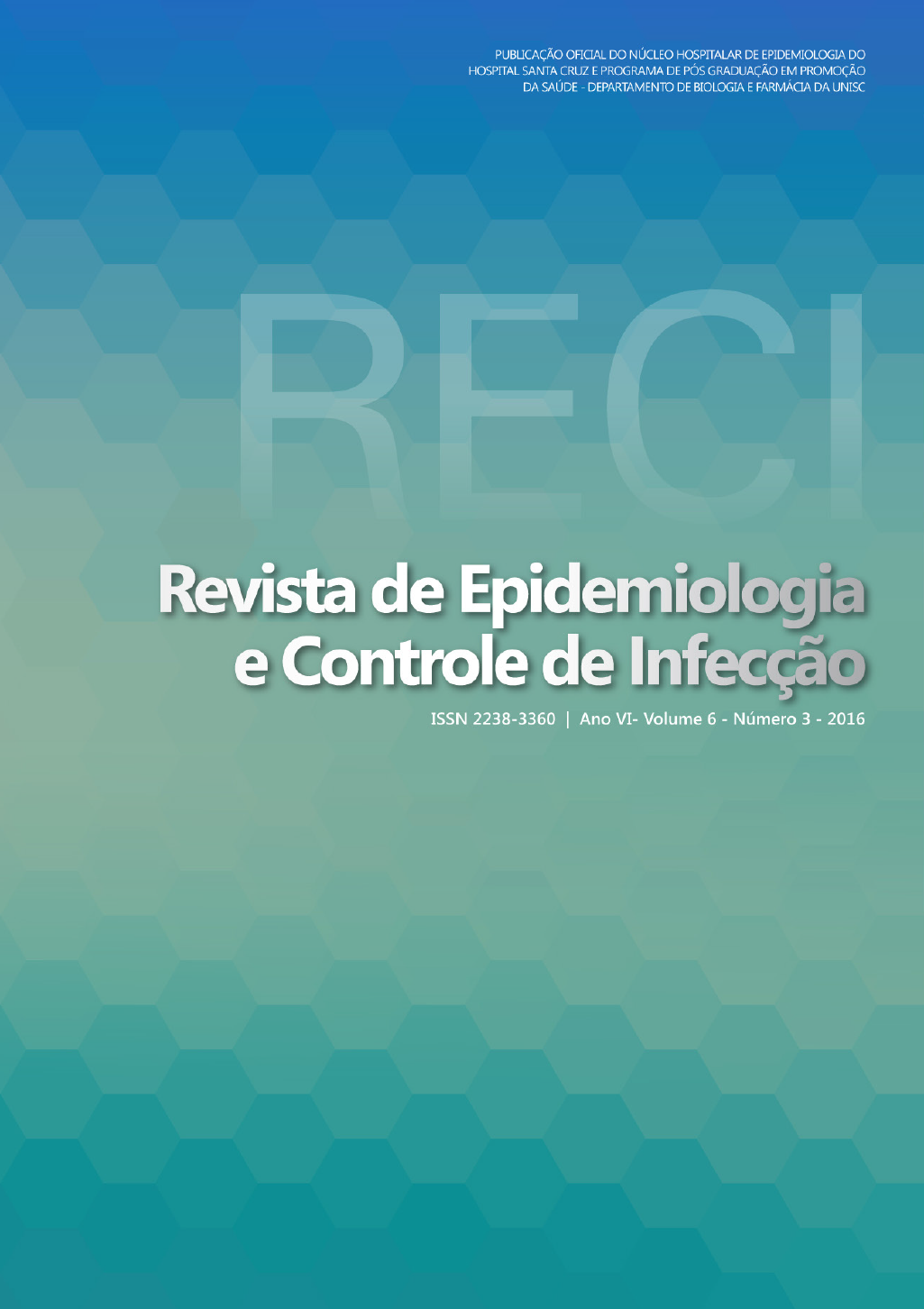Microbiological evaluation of the cell phones of the professionals of a Surgical Center in a beneficent Hospital
DOI:
https://doi.org/10.17058/reci.v6i3.6717Abstract
Background and Objectives: Hospital infection has been a frequent and growing problem worldwide. To try to determine factors that might contribute to the spread of bacteria in the hospital environment is part of the control strategy of this evil. Mobile phones, which are devices present in everyday life in any environment on the planet, including health facilities, can serve as reservoirs of pathogens, and its handling might help in the spread of infection in hospitals. This concern rises when it comes appliances belonging to potentially colonized environments of employees by resistant bacteria environments. The objective of this study was to evaluate the degree of contamination of mobile phones of employees of a surgical ward of a hospital, checking for differences between the functions of these professionals, such as surgeons, anesthetists, perfusionists, nurses, and scrub nurses. Methods: We collected swabs moistened in enriching broth 50 mobile phones of employees of the surgical rooms. These swabs were hatched and sown, and his reading was held on 24 and 48 hours, with separate results according to each specialty. Results: Of 50 evaluated handsets, 88% (44) were colonized. The most common bacteria were coagulase-negative staphylococci, followed by Bacillus subtilis (15.9%) and Micrococcus sp (9.1%). There was no statistically significant difference in the degree of contamination among the evaluated specialties. Conclusion: As shown in the literature, cell phones are contaminated with potentially infectious bacteria, and therefore, measures to regulate their use and antisepsis should be stipulated by the institutions.Downloads
Downloads
Published
How to Cite
Issue
Section
License
The author must state that the paper is original (has not been published previously), not infringing any copyright or other ownership right involving third parties. Once the paper is submitted, the Journal reserves the right to make normative changes, such as spelling and grammar, in order to maintain the language standard, but respecting the author’s style. The published papers become ownership of RECI, considering that all the opinions expressed by the authors are their responsibility. Because we are an open access journal, we allow free use of articles in educational and scientific applications provided the source is cited under the Creative Commons CC-BY license.


